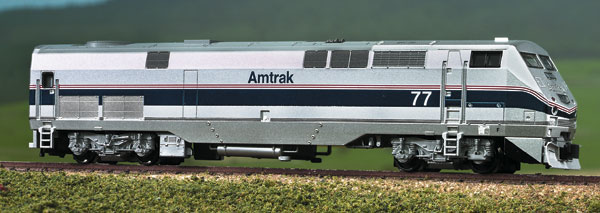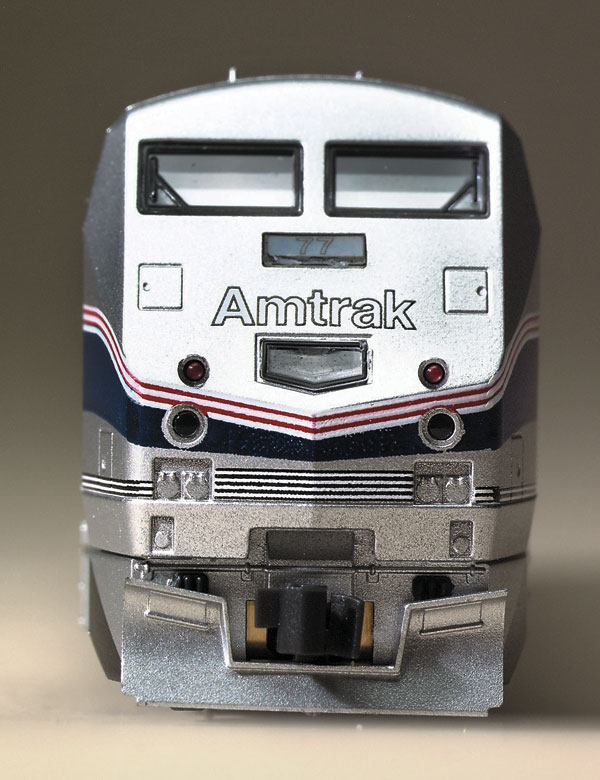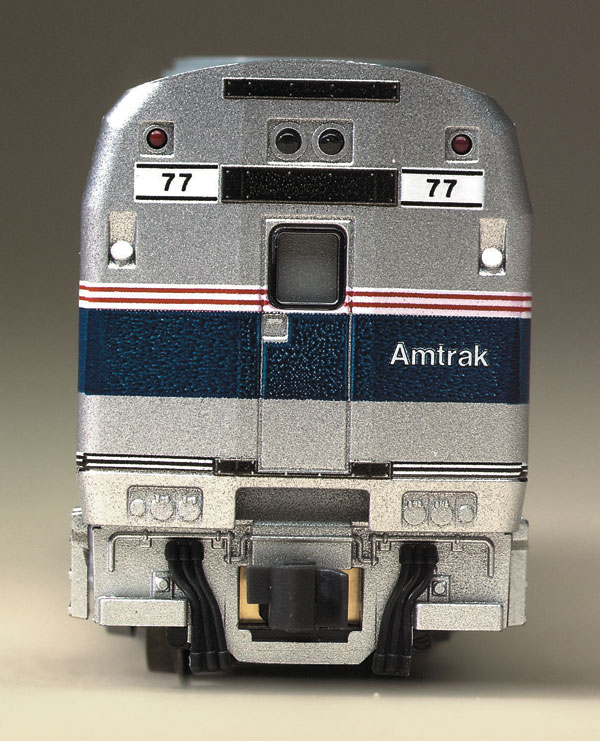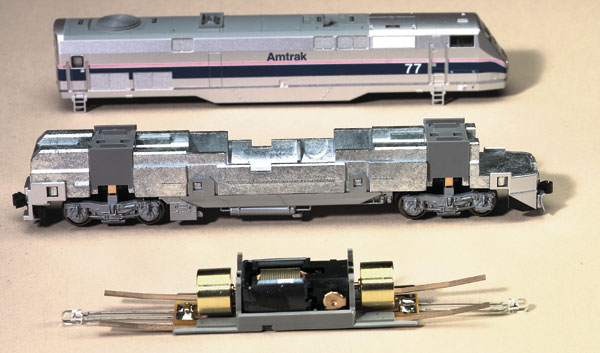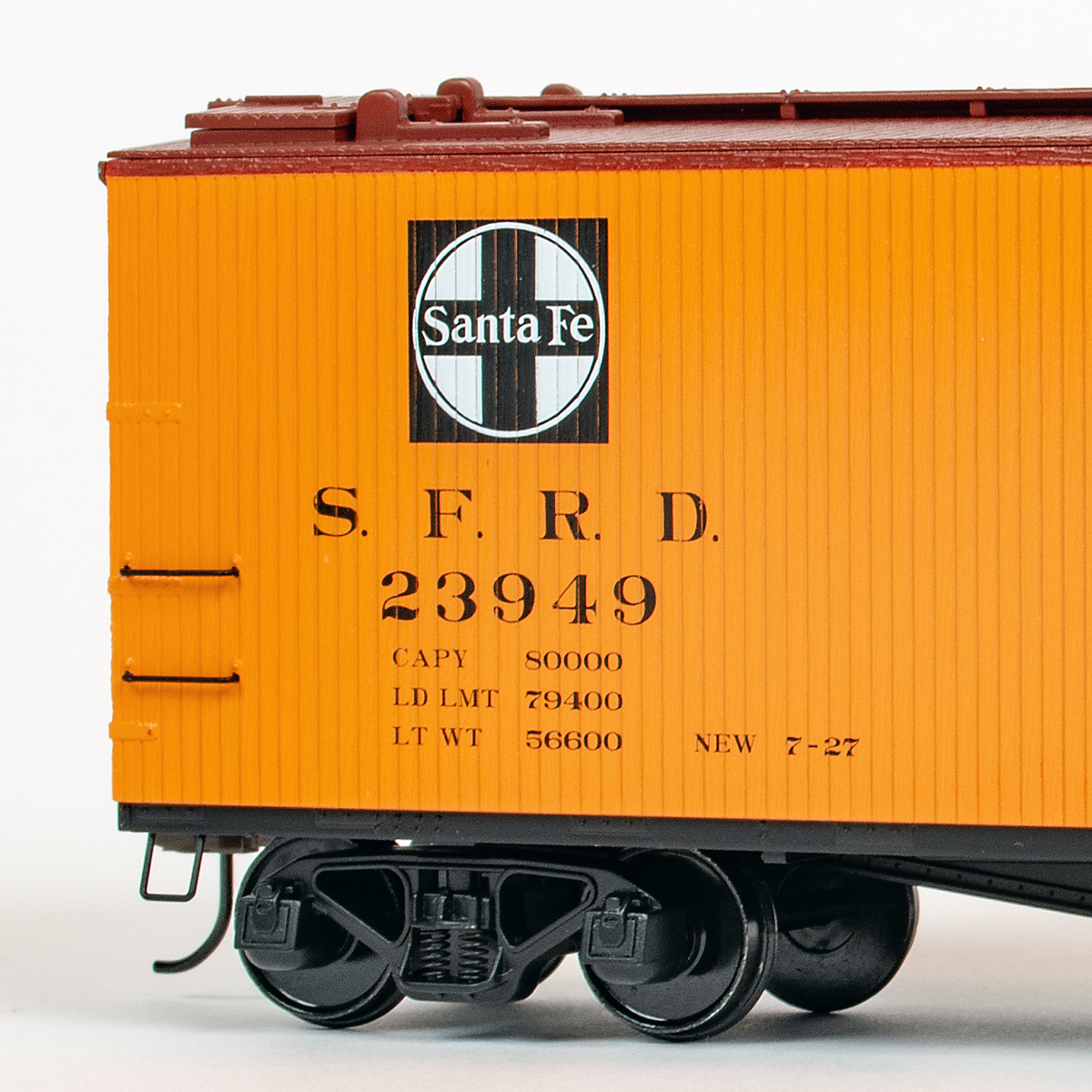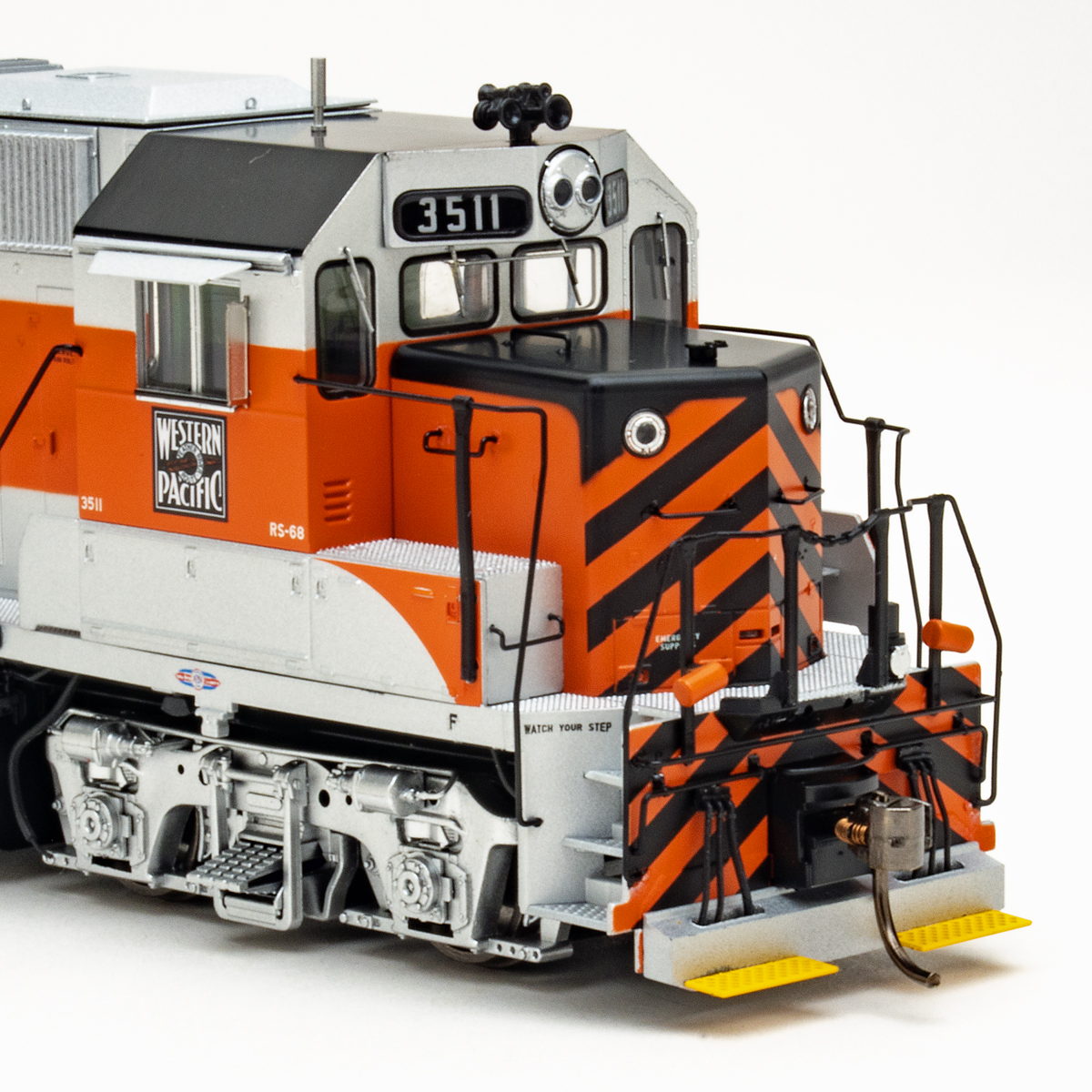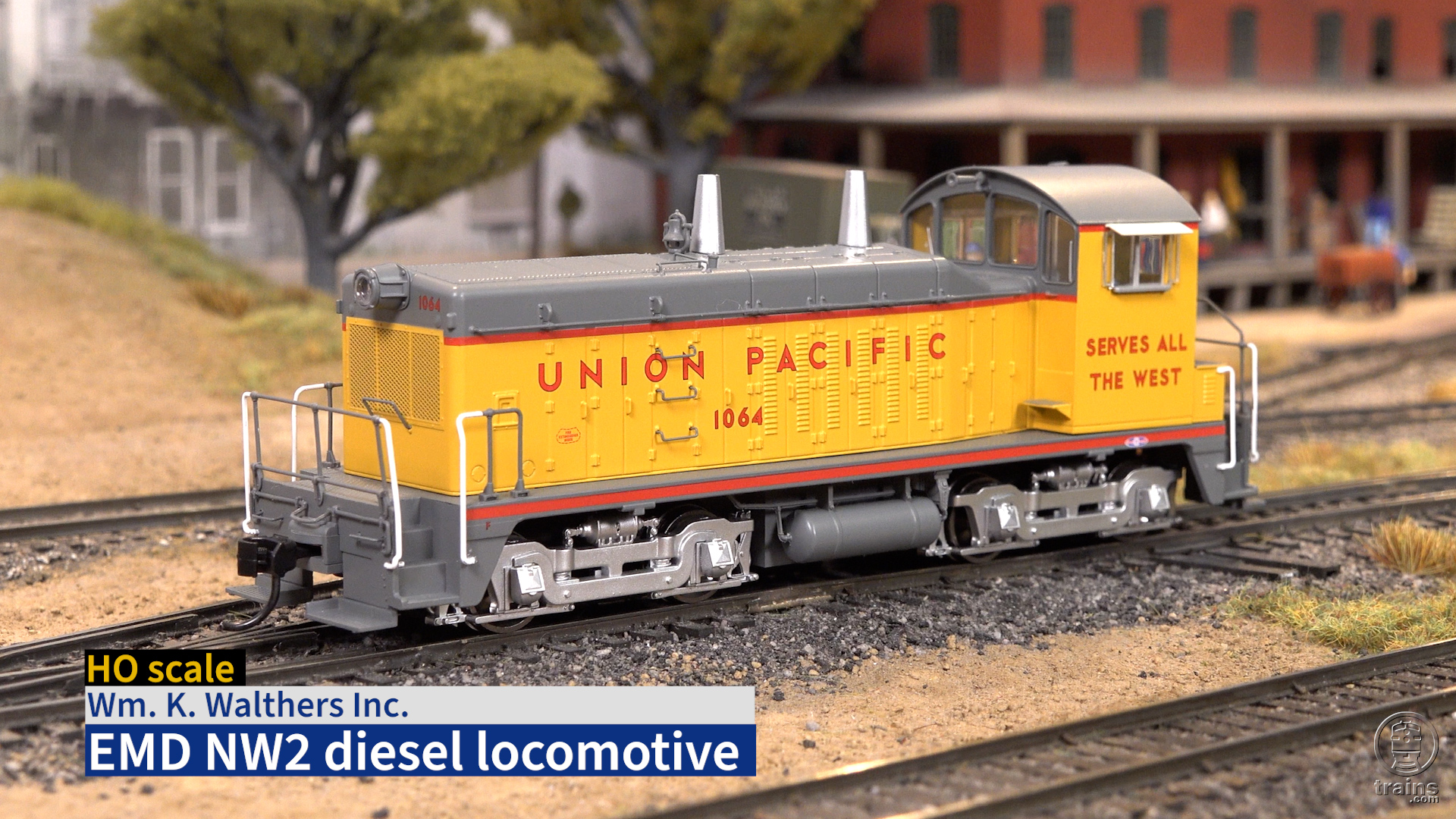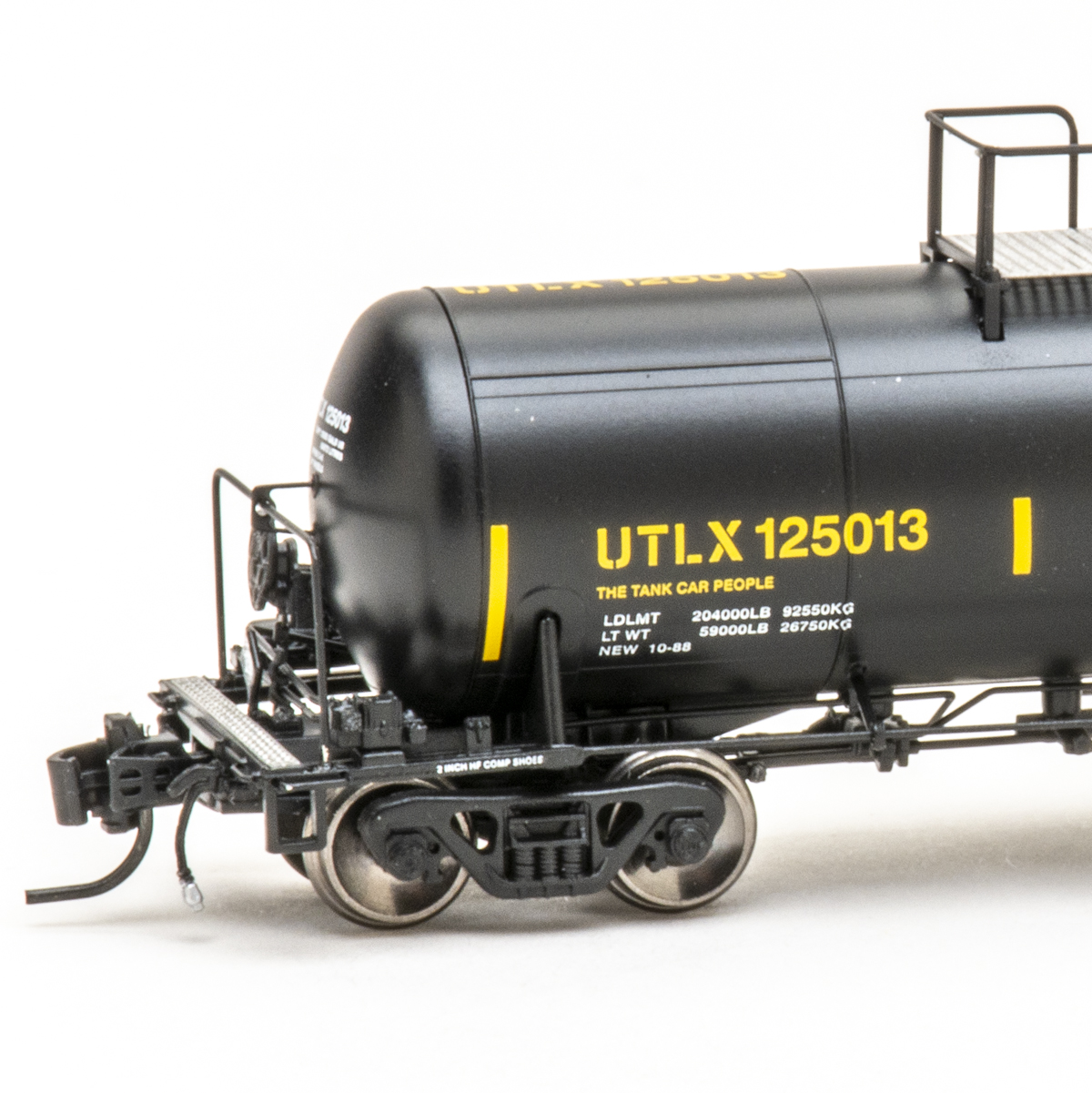As the F40PHs began showing their age after two decades of service, Amtrak tapped General Electric in May 1996 to build a new locomotive based on GE’s 4,000-horsepower “Genesis” P40, but equipped with a 16-cylinder FDL engine rated at 4,250 hp. Delivery of the P42 began the following October.
Amtrak now rosters 207 of these angular, 110-mph locomotives. P42s nos. 1-20 were built in 1996, nos. 21-120 in 1997, and nos. 121-207 in 2001.
Kato’s P42 matches the drawings of the dimensionally identical P40 published in the January 1994 issue of Model Railroader.
Essentially an upgraded GE Dash 8-40B internally, the P42’s designers omitted the P40’s red emergency brake application light centered above the windshield, the two strobe lights to either side, and the small window in the rear intended for hostlers to use during back-up moves. Amtrak has since modified several of its 44 P40s to eliminate these earlier features.
The body shell comes off the one-piece cast metal alloy frame easily. Just gently spread the sides of the fuel tank until the mechanism slips out.
A double-ended, five-pole motor mounted on a plastic frame nestles inside a cavity in the one-piece metal frame. A printed-circuit board attached to the plastic motor mount holds two white headlight LEDs and a pair of phosphor-bronze strip contacts that transfer electricity to the motor from tabs mounted vertically on the side of each truck.
Digitrax is developing a drop-in Digital Command Control (DCC) decoder specifically for this P42, although some N scalers reportedly have successfully installed Digitrax’s DN145K decoder.
Turned brass flywheels on both ends of the motor shaft smooth out the motion. Acetal plastic drive shafts and universals transmit the rotation from the motor to the truck gears via a brass worm in each truck gearbox.
The wheels on our sample were chemically darkened and met National Model Railroad Association standards for gauge and flange depth.
The body-mounted magnetic knuckle couplers are compatible with Micro-Trains and similar types, although they’re mounted a bit low. Kato has included a pair of extended shank couplers if your P42 will be working on curves of 9¾” radius or less.
Kato made two obvious concessions to durability. The Sinclair-style radio antenna on the right-hand side of the cab roof is a solid casting, rather than a more delicate (and highly breakable) replica of the prototype antenna. And the windshield wipers are cast onto the windshield, rather than mounted below the windshield as on the prototype.
Separate headlight lenses, front numberboard, and front and rear m.u. hoses are included, and I easily installed these parts with a pair of tweezers. I had a little difficulty removing the snowplow to gain access to the front m.u. hose mounting holes. My advice is to pull this part away from the body shell with a steady, straight tug.
This model also has a cab interior, albeit rudimentary, which I believe is a first for a mass-produced N scale locomotive. You could easily modify a scale figure or two and glue them to the seats in the cab.
Our sample started creeping at 1.3 volts and performed smoothly throughout its speed range. The top speed is high, but after all this is a passenger train unit and it’s meant to run like a greyhound. Drawbar pull is .96 ounces, good for about 11 80-foot passenger cars on straight, level track.
Kato’s P42 can justifiably take its place among the best N scale locomotives produced to date.
Price: $98.00 each
$196.00 two-unit sets
Manufacturer:
Kato U.S.A., Inc.
100 Remington Rd.
Schaumburg, IL 60173
www.katousa.com
Features:
DCC ready
Directional headlight with white LEDs
Drawbar pull: .96 ounces
Engine weight: 4.1 ounces
Minimum radius: 9¾”
P42 road names:
Single locomotives:
Amtrak 11 (Phase III)
Amtrak 77 (Phase IV)
Amtrak 103 (Phase IV Northeast Corridor)
Two-unit sets:
Amtrak 34 (Phase III)
Amtrak 94 (Phase III)
Amtrak 5 (Phase IV)
Amtrak 52 (Phase IV)





